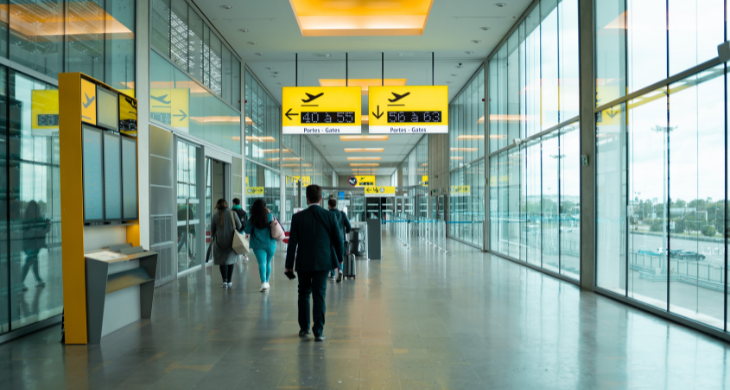


Passenger traffic has made a steady rebound in the first half of 2022, according to ACI Europe’s Air Traffic Report covering the month of June, Quarter two (Q2) and the first half of 2023 (H1).
Across the European airport network, passenger traffic increased by +28.3% in H1 2023 compared with H1 2022, with international traffic growing at twice the rate of domestic traffic, at a +32.2% and +16.6% increase, respectively. The report also outlined a slow in the pace of growth throughout Q2 to +16.3% compared to Q1 at +49%, due to the lifting of COVID-19 restrictions on Intra-European travel as of April last year.
Compared with pre-pandemic levels in 2019, passenger volumes were 7.7% in H1, making a steady improvement over the period from -11% in January to -5.9% in June.
Speaking about the data presented in the report, Olivier Jankovec, Director General, ACI Europe, said: “Passenger traffic has rebounded over the past six months, getting ever closer to a full recovery. However, 2023 is not 2019. There are significant variations in performance across national markets, and volumes still remain below their pre-pandemic levels for more than half (52%) of Europe’s airports.”
“Apart from the lasting impact of the war in Ukraine on some markets, this is largely due to recovery patterns becoming structural,” continued Jankovec. “These include the impressive yet selective expansion of Ultra-Low Cost Carriers and relative retrenchment of Full Service Carriers along with the prominence of leisure and VFR demand as well as some domestic traffic shifting to other transport modes.”
The report also revealed that airports in the EU+ market and the rest of Europe grew their passenger traffic at a similar pace in H1 compared to last year, at +28.7% in the EU+ market and +26.4% in the rest of Europe. Compared with 2019 levels, the rest of Europe nearly reached a full recovery at -2.1%, while the EU+ market lagged behind at -8.7%.
“So far, demand has remained extremely resilient in the face of lasting inflationary pressures and record increases in airfares since the beginning of the year,” said Jankovec. “But looking ahead and past the peak Summer months, we do see significant downside risks and much uncertainty. These include the prospect of deteriorating macroeconomics for the Eurozone and the UK, as well as initial signals that discretionary spending might start decreasing and that pandemic-savings buffers are exhausted.”
Image: Photo by Maëva Vigier on Unsplash






